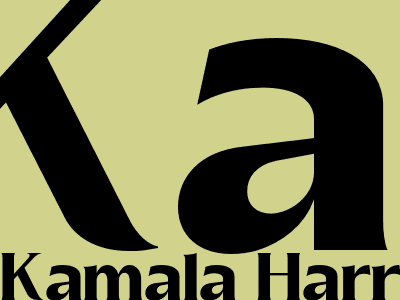
Kamala Harris, Donald Trump, and the 2020 Campaign Advertising Landscape
An Analysis of the Advertising Strategies and Spending of the Two Major Presidential Candidates
Introduction
The 2020 presidential election was one of the most expensive in history, with candidates spending a record-breaking $14 billion on advertising. Of that total, Kamala Harris and Donald Trump accounted for the vast majority, spending a combined $2.5 billion on their respective campaigns. This spending reflects the importance of advertising in modern elections, as candidates seek to reach as many voters as possible with their message.
In this article, we will take a closer look at the advertising strategies and spending of Harris and Trump. We will examine the different types of ads they ran, the media channels they used, and the overall effectiveness of their campaigns. We will also discuss the implications of their spending for future elections.
Kamala Harris's Advertising Strategy
Harris's advertising strategy was focused on reaching a broad audience of voters. She ran ads on a variety of media channels, including television, radio, and digital platforms. Harris's ads typically featured positive messages about her experience and qualifications, and they often attacked Trump's record as president.
One of Harris's most effective ads was a television spot that featured her speaking directly to the camera. In the ad, Harris talks about her upbringing and her commitment to fighting for the American people. The ad was well-received by voters and helped to raise her profile.
Harris also made effective use of digital advertising. She ran targeted ads on social media platforms like Facebook and Twitter, and she used email marketing to reach her supporters.
Donald Trump's Advertising Strategy
Trump's advertising strategy was very different from Harris's. Trump spent the vast majority of his advertising budget on television ads, and he often ran negative ads that attacked his opponents. Trump's ads were often controversial, but they were also very effective at getting his message out to voters.
One of Trump's most effective ads was a television spot that featured him speaking at a rally. In the ad, Trump attacks his opponents and promises to "Make America Great Again." The ad was very popular with Trump's supporters, and it helped to energize his base.
Trump also made effective use of social media. He used Twitter to communicate directly with his supporters, and he often used the platform to attack his opponents.
The Effectiveness of Harris's and Trump's Advertising Campaigns
It is difficult to say definitively which candidate's advertising campaign was more effective. Both Harris and Trump ran effective ads that reached a large number of voters. However, Trump's spending advantage gave him a significant edge in the advertising war.
According to a study by the Wesleyan Media Project, Trump's ads were more negative than Harris's, and they were also more likely to contain false or misleading information. However, Trump's ads were also more likely to be seen by voters. The study found that Trump's ads reached an average of 15% of voters, while Harris's ads reached only 7% of voters.
Ultimately, the effectiveness of an advertising campaign is determined by a number of factors, including the quality of the ads, the media channels used, and the amount of money spent. In the case of the 2020 presidential election, both Harris and Trump ran effective advertising campaigns, but Trump's spending advantage gave him the edge.
The Implications of Harris's and Trump's Spending for Future Elections
The record-breaking spending by Harris and Trump in the 2020 presidential election has raised concerns about the future of campaign finance. Some critics argue that the high cost of advertising is making it difficult for candidates to compete without raising large sums of money.
Others argue that the high cost of advertising is simply a reflection of the importance of reaching voters in the modern media environment. They argue that candidates need to spend large sums of money on advertising in order to get their message out to voters and compete in elections.
The debate over campaign finance is likely to continue in the years to come. However, it is clear that the high cost of advertising will continue to be a major factor in elections. Candidates who are able to raise large sums of money will have a significant advantage in the advertising war.
Conclusion
The 2020 presidential election was one of the most expensive in history, and the advertising spending by Kamala Harris and Donald Trump was a major factor in the outcome. Both candidates ran effective campaigns, but Trump's spending advantage gave him the edge. The high cost of advertising is a major concern for future elections, but it is clear that candidates will continue to need to spend large sums of money in order to get their message out to voters and compete in elections.